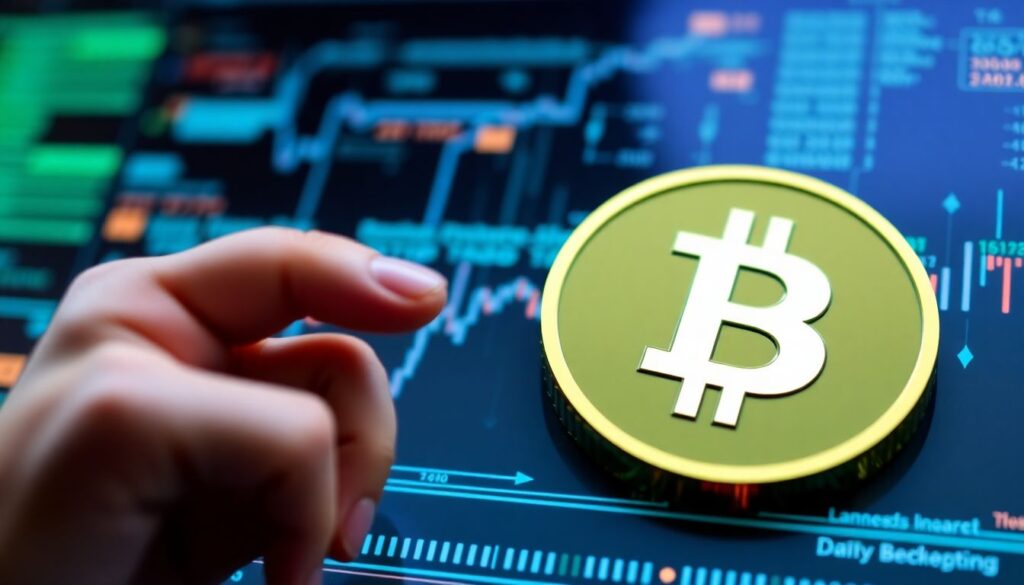Getting Started: Why Volatility and Risk Matter in Crypto

If you’ve just started dipping your toes into the world of cryptocurrency, you’ve probably noticed something pretty quickly—the prices move a lot. One minute Bitcoin’s up, the next it’s tumbling. This isn’t just random noise. What you’re seeing is crypto market volatility, a key concept every beginner crypto investor needs to understand before putting money on the line.
Unlike traditional financial markets, crypto markets are still relatively young and operate 24/7, meaning prices are constantly changing based on news, sentiment, and technical signals. That’s why understanding crypto risk isn’t optional—it’s essential.
What Exactly Is Volatility in Crypto?
Volatility refers to how much and how fast an asset’s price moves. In the crypto world, that range of movement is often extreme. For example, a coin might jump 20% in one afternoon after a tweet from a big influencer, then drop 30% the next day after new government regulation talk hits.
Volatility isn’t inherently bad—it creates opportunities. But it also increases uncertainty. For novice investors, this means two things:
– You could make quick gains.
– You could lose money just as fast—sometimes faster.
Understanding how to factor volatility into your decision-making is the first step toward healthy crypto trading strategies.
Common Sources of Crypto Market Volatility
Several factors contribute to crypto’s rollercoaster behavior. The more you know about them, the more confident your crypto market analysis will become:
– Low liquidity: Many coins have small trading volumes, so even a modest buy or sell can cause large price swings.
– Speculation: A significant part of crypto’s valuation is guesswork. People buy coins based on future potential rather than intrinsic value.
– Headlines and tweets: News has a huge impact. A single social media post can send a coin soaring—or crashing.
– Regulation: Markets react fast to new policies. Even the hint of bans or regulation shifts can cause panic selling.
Risk in the Crypto Market: What Beginners Often Miss

It’s easy to focus on gains and forget the losses. But understanding crypto risk means looking at both sides. Risks come in many forms, not just price drops. Here are a few that catch beginners off guard:
1. Security risks: Hacks, phishing scams, and shady exchanges are still common.
2. Technical risks: Smart contract bugs can sink entire DeFi protocols.
3. Market manipulation: Without strong oversight, whales and coordinated groups can pump and dump prices.
4. Emotional risk: Acting on fear or hype often leads to poor investment decisions.
Crypto isn’t a guaranteed win. But with the right approach, you can manage the risks and make informed choices.
Strategies to Handle Volatility Like a Pro
Let’s look at how experts suggest navigating the ups and downs of the market without losing your mind—or your money.
1. Start small: When you’re new, it’s smart to treat your first crypto positions as tuition. Invest only what you can afford to lose.
2. Diversify your holdings: Don’t put all your funds into one coin. Expert crypto trading strategies include spreading risk across different projects, sectors, and blockchains.
3. Use dollar-cost averaging (DCA): Rather than trying to time the market, invest fixed amounts at regular intervals. This smooths out the effects of volatility.
4. Set stop-losses and targets: Decide in advance when you’ll sell—both on gains and losses. This minimizes emotional decision-making.
5. Keep your portfolio in cold storage: Especially during volatile times, storing your crypto offline protects your investments from hacks.
Expert Perspectives: What Analysts Say About Managing Crypto Risk
We asked blockchain analysts and financial strategists how they deal with uncertainty in the crypto space. Here’s what they recommend:
– *“Volatility is opportunity if you’re disciplined. But risk management is what separates traders from gamblers,”* says Lena Hart, a crypto trading coach.
– *“The first mistake beginners make is going all-in when they see green candles. Smart investors wait for confirmation and manage position sizes,”* adds Victor Ngo, a market analyst at Block Insight.
– *“Understanding crypto risk starts with understanding yourself. If you panic-sell at every dip, your strategy needs work,”* advises Emily Torres, a digital asset advisor.
These voices all point to one core takeaway: a thoughtful, controlled approach beats emotion-driven decisions every time.
Realistic Expectations: Growth Comes with Bumps
It’s tempting to think you’ll double your money in a week—many beginner crypto investment stories tend to highlight outliers who struck gold early. But the reality? Everyone faces losses. Everyone watches their portfolio dip.
What separates long-term winners from shakeouts is how they handle those dips. Will you panic sell? Or will you hold with a plan?
Markets correct. Coins go through hype cycles. Your success depends more on managing emotions and risk than predicting the next moonshot.
Closing Thoughts: Learn, Adjust, and Evolve

If you’re new to the crypto markets, volatility might seem overwhelming at first. But with steady learning and practiced discipline, it becomes just another part of the game—not something to fear.
Make time for crypto market analysis, study crypto trading strategies from trusted sources, and experiment in small, manageable steps. Don’t rush. The more you understand about volatility and risk, the more confident and successful your journey in crypto will be.

